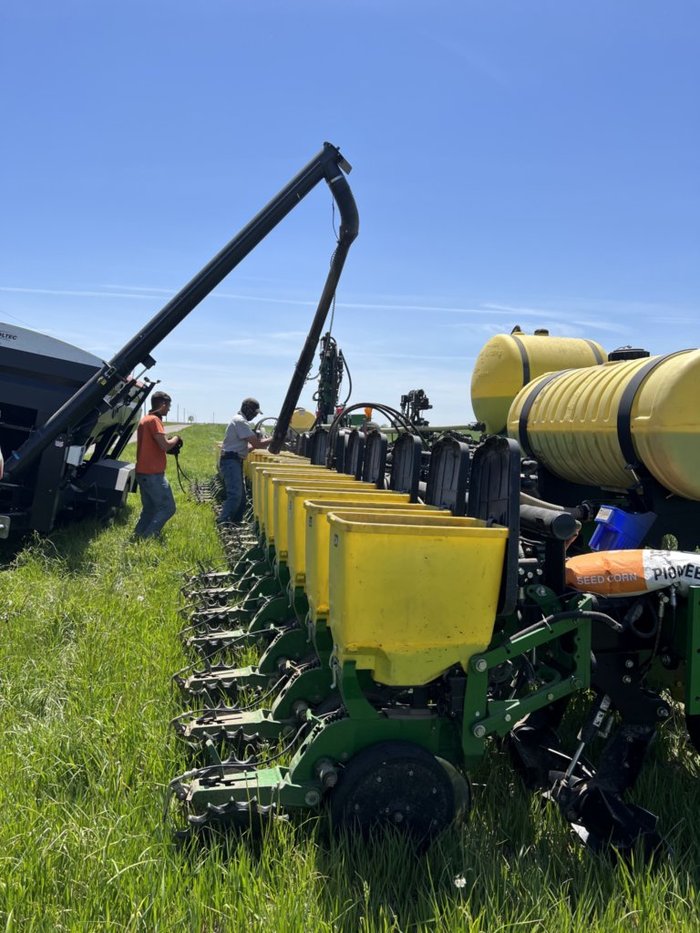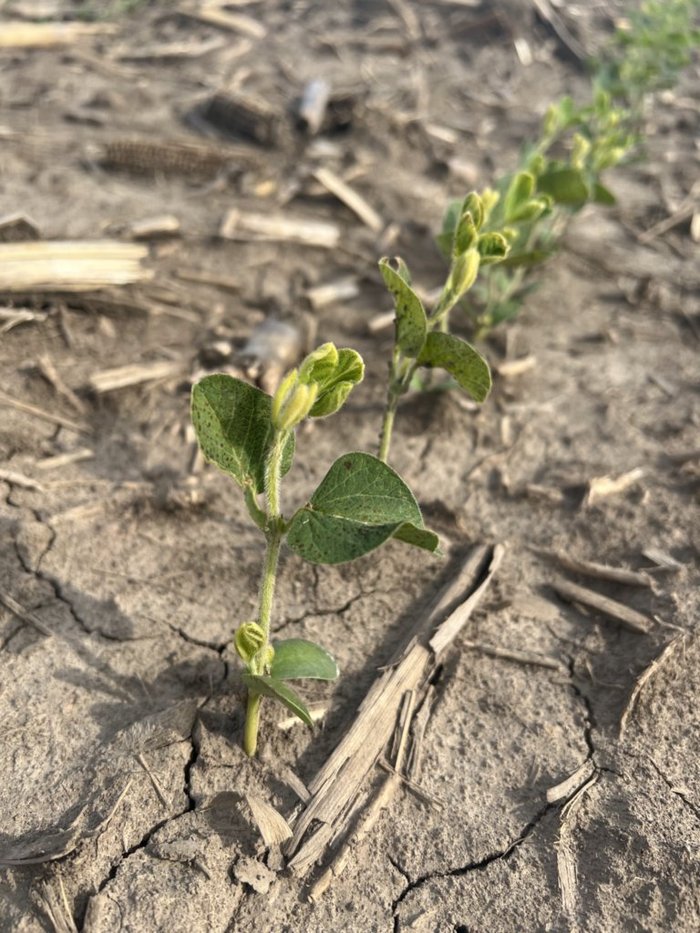Row Spacing
The advantages of 15-inch and 30-inch row spacing in soybeans give us the opportunity to have uniform emergence, more uniform placement, and decreased seeding or lower seeding costs. In general, soybean seeding recommendations in Illinois have been 140,000 seeds per acre. Over the past five years, especially in Central Illinois, seeding populations have decreased to 120,000 to 130,000 seeds per acre. In other areas of the state, some may still plant more than 140,000 seeds per acre.
To achieve maximum yield, aim for around 100,000 uniformly standing plants per acre in 7.5- and 15-inch rows and 80,000 uniformly standing plants per acre in 30-inch rows. I have always advocated for reducing soybean seeding rates but encourage farmers to consider the following before making a final decision.
Planter
I remember the days when a drill was considered a “controlled spill” of soybeans, and my dad liked to plant soybeans thick. Let’s just say drills distributed seeds less precisely than planters. Follow drill or planter instructions to ensure proper calibration and function so they meter seed at the desire rate for a uniform stand. According to this study Does Precision Planting Really Matter?, a vacuum seed meter (compared to cone seeding) helped mitigated soybean yield loss at suboptimal seeding rates.
Seeding Depth
A uniform placement or seeding rates of 0.75 to 1.5 inches often depends on soil type, tillage, or moisture, and they are “normally” recommended for uniform emergence to avoid plant-to-plant competition. However, some ultra-early soybean planters have experimented with seeding depths of 2 to 3 inches to “shelter” or slow emergence during adverse conditions or before last frost. When planting deep, be aware of risks such as sporadic emergence or crusting.
High Seeding Rate
If seeding rates are too high at planting or after replant, soybean plants can compete for light and nutrition, lodging might happen, and seed cost will, of course, increase. For late planting, start increasing your planting population by 3% to 5% by June because of plant stature. If soybeans are still not planted by June, it is recommended to increase seeding rates by 10%. Yield does not always increase as the population increases.
Low Seeding Rate
Soybeans consist of “plasticity”, meaning they are adaptable. Each soybean plant, depending on variety, can increase its leaf area, allowing it to capture more sunlight, more branching, and hopefully, pods. However, if seeding rates are too low, farmers risk losing yield, increased weed pressure, and harvest issues due to large stem size.
Seed Quality
The very dry harvest of 2024 caused seed producers to harvest at low moisture levels (below 8%), which can impact seed quality. Dr. Shawn Conley recently encouraged farmers to check their seed tags in 2025 after seed has been delivered. He said that if the germ rate is 92% or better, then don’t worry, but if it’s below 85% germ or older seed, farmers may need to make adjustments and increase their seeding rate. Another thing to remember is that seed companies test seed germination at ideal temperature and moisture; therefore, farmers may want to plant 10% to 15% more soybean seeds than the germination rate, especially if planting early in cooler conditions.
Seed Treatment
Research has shown that by investing in high-quality seed with treatments, planting populations can be reduced. Seed treatment is like “insurance” for the seed, especially when planting early. A full seed treatment can visually result in greater emergence, vigor, and a more uniform stand, but this does not always translate into a yield boost.
The question is: How many components do you really need on the seed? Based on current research, the jury is still out on insecticide components such as neonicotinoids and biologicals.
Dr. Nick Seiter’s research project, “Which Insect Pests and at What Threshold Levels Warrant an Insecticide Application or an Insecticide Seed Treatment in Soybeans?” – funded by Illinois Soybean Association (ISA) checkoff dollars – is helping us to learn more. I also continue to see research that points to neonicotinoids being one of many factors that cause increased slug crop damage in certain years.
Planting Date
If planting early, I recommend fungicide components. The Crop Protection Network (CPN) released “Fungicide Efficacy for Control of Soybean Seedling Diseases” to help us keep track of which fungicide active ingredients work the best against each disease.
Fungicide seed treatments can also help protect seed with low germination, from disease issues to improving seedling establishment. Despite seed treatment protection, farmers may still need to increase population in early planting situations, especially in cold or wet springs. We personally ran into a replant situation last year, so I have become a bit more cautious on early plant planting population recommendations.
Pre-emergence Herbicide Interaction with ILeVO
There have been instances where I’ve witnessed reduced soybean populations due to pre-emergence herbicides, ILeVO, or interactions between both pre-emergence herbicide with ILeVO, especially in cold, wet planting situations. In most of these cases, replant was not needed because of soybean’s ability to compensate for the reduced population. Recent CPN research found no negative effect on plant stand and soybean yields from phytotoxicity caused by ILeVO and/or preemergence herbicides. Cold, wet conditions can reduce the soybean’s ability to metabolize herbicide and Dr. Aaron Hager’s research team is currently utilizing ISA checkoff dollars to investigate injury potential to very early-planted soybean from various active ingredients.
Soil Type/Seedbed Condition
Seeding recommendations may differ for each field and can be increased based on soil type, drainage, tillage/ no-till, crop rotation, pathogen, pest, or DEER pressure.
Resources:
Plant Populations and Seeding Rates for Soybeans
2021_SoybeanPlantSpacing_final.pdf
Why Seed Treatment on Soybeans? – Field Advisor
Soybean Seedling Efficacy 2025
Neonicotinoid Seed Treatments: What Does the Research Tell Us? – Field Advisor
Top Ten Things You Need to Know After Slugfest 2024 – Field Advisor
Checklist for Late Soybean Planting (Mid-May to June) – Field Advisor




 and then
and then